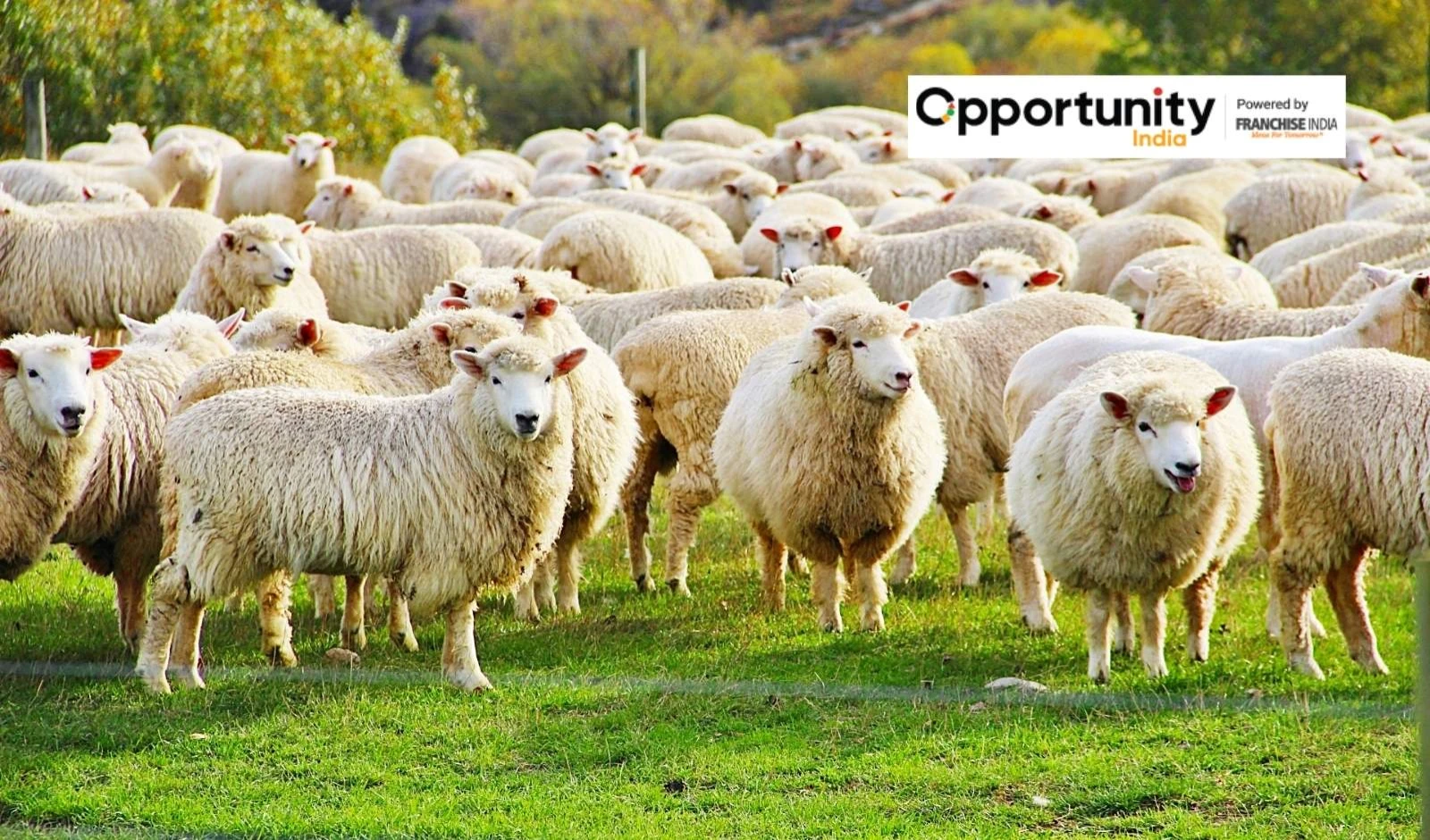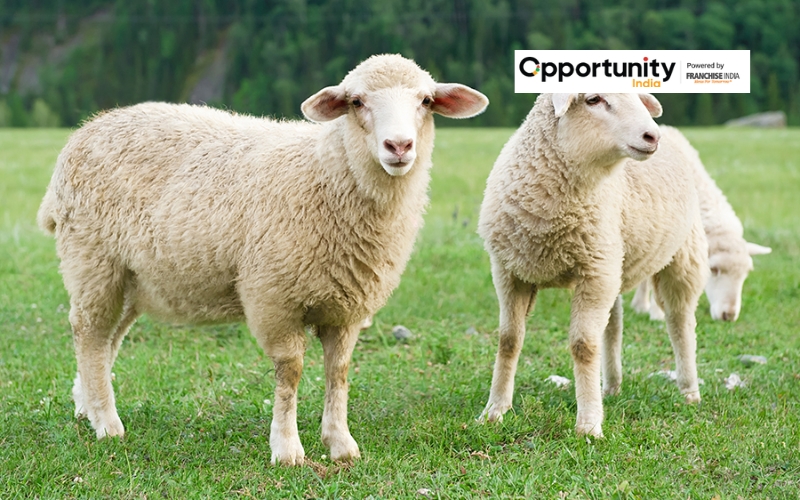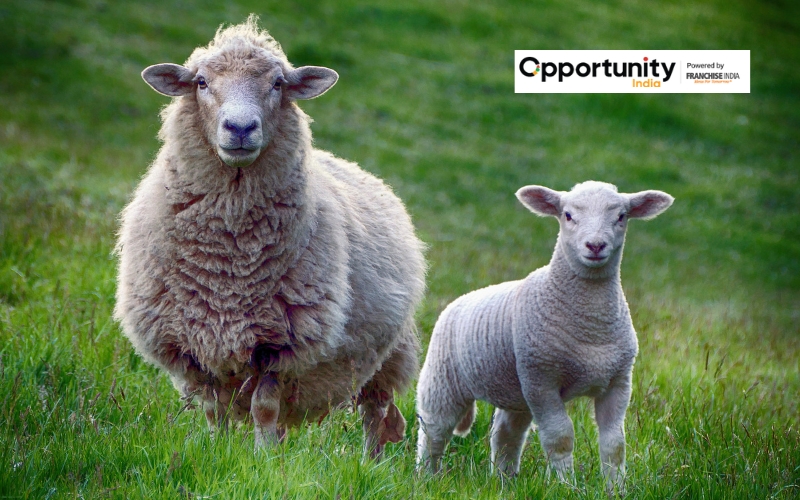
If you have ever seen a herd of sheep grazing in peace while driving through the countryside, you may have questioned whether a sheep farming business plan can be profitable. In India, raising sheep is quickly emerging as one of the most intelligent livestock businesses, particularly for those seeking a scalable business model, manageable investment, and consistent revenue. This guide is for everyone, whether you're a young person investigating rural business, a retired professional thinking about agriculture, or a farmer trying to diversify.
Why Sheep Farming Business is a Smart Idea?
One of the world's most enduring and profitable animal businesses is sheep farming. It is essential to India's rural economy, particularly in the country's arid and semi-arid areas. For both beginner and seasoned agri-entrepreneurs, sheep farming offers an attractive and sustainable business opportunity due to the rising need for mutton, wool, and manure.
Also Read: How to Start a Vegetable Farming Business?
Sheep are low-maintenance creatures that can tolerate a variety of environmental factors. Due to their quicker reproductive cycles and lower initial investment requirements than cattle, they guarantee consistent revenue. Mutton consumption is increasing in India, and both domestic and foreign breeds of wool are needed for textile production. With little funding, small and marginal farmers can begin and progressively expand.
Sheep, to start, require little care. They don't require sophisticated machinery or high-tech infrastructure. They will reward you with meat, wool, and even dung if you give them a clean environment, nutritious food, and basic care. The demand for mutton in India is increasing annually, which is the finest part. With the addition of wool, skin, and even organic fertilizer, you can make money from a single animal in several ways.
The following benefits of sheep farming make it a desirable enterprise:
- Several Sources of Income: You can make money by selling sheepskin, mutton, wool, and even valuable sheep manure, which is a great organic fertilizer.
- Low Initial Investment: Purchasing foundation stock and establishing basic infrastructure for sheep typically costs less than for other livestock.
- Adaptability: Sheep are resilient creatures that can live in a variety of climates throughout India and make use of marginal terrain that isn't suited for growing crops.
- Less Labor-Intensive: Compared to other large animals, sheep typically demand less labor for daily care and management.
- Good Return on Investment: Sheep farming has the potential to generate a substantial return on investment with the right management; some reports indicate returns of up to 78%.
- Constant Demand: The domestic market is seeing a stable and increasing demand for sheep products, particularly mutton, which is consumed in large quantities by a variety of populations.
- Government Support: To encourage sheep farming, the federal and state governments provide a range of programs, financial aid, and subsidies that can greatly lower your initial investment.

What Can You Get from the Sheep Farming Business?
Let's see what sheep have to offer if you were to start a sheep farming business:
- Mutton (Meat): It is considered a high-end meat in Indian restaurants and homes.
- Wool: Although it isn't as profitable as meat, wool is nevertheless used to make textiles.
- Manure: A great organic fertilizer that you may use on your own property or sell.
- Milk: Not very common; however, certain breeds make cheese from their milk.
- Skin/Hide: It is popularly used in the leather business.
Thus, you're developing a multi-product business rather than merely raising sheep.
Is Sheep Farming Profitable in India?
Sheep farming in India is undoubtedly profitable, particularly when well managed with the appropriate planning and breed selection. It is regarded as one of the most economical and expandable livestock businesses, especially in rural and semi-arid areas with grazing land and few other sources of income. Sheep farming guarantees steady market prospects for small farmers and business owners alike, given the rising demand for mutton in both urban and rural locations.
Also Read: Nursery Business Plan and Key Steps
Diversified revenue is still another significant advantage. In addition to the most profitable product, meat, sheep also produce wool, dung, and occasionally milk. While the manure increases soil fertility or can be sold as organic fertilizer, the wool can be sold to textile companies or local marketplaces. Over time, sheep farming becomes more resilient and sustainable due to its multi-product output.
Step-by-Step Guide to Start Sheep Farming
Research and Planning
Start by conducting in-depth research on local feed availability, market demand, climate, and sheep breeds. Visit already-existing farms, speak with nearby veterinarians, and go to government workshops or livestock shows.
Create a business plan that consists of the following:
- Type of sheep farming (meat, wool, or mixed)
- Estimated budget and land requirement
- Breeding plan
- Target market (local butcher, wholesale buyer, direct sale, etc.)
- ROI and break-even analysis
Selecting the Proper Breed
For profitability, choosing the right sheep breed is essential. The decision is based on climate adaptability and your purpose (meat, wool, or dual-use).
Common Breeds in India:
- Meat Purpose: Nellore, Deccani, Mandya, Mecheri
- Purpose of Wool: Changthangi, Magra, Marwari, and Gaddi
- Dual Use: Chokla and Jaisalmeri
For a higher yield, imported breeds like as Merinos and Dorsets can also be employed under restricted circumstances.
Land and Shed Requirements
At first, you don't need a lot of land. If pasture and stall feeding are combined, 30 to 40 sheep can be kept on about 1 acre of land.
Shed Design:
- A raised shed with adequate drainage and ventilation.
- Covered space to keep out the heat and rain.
- Watering and feeding area.
- The lambing pen for infants.
Advice: To prevent infections and foot rot, always keep your floors dry and hygienic.
Also Read: 10 Profitable Chocolate Business Ideas
Feeding Management
A healthy diet promotes the growth and well-being of sheep. Usually, the diet consists of:
- Dry fodder includes dried leaves, straw, and hay.
- Green fodder includes grasses and beans.
- Concentrates include mineral mix, oil cakes, and grains.
- Each sheep needs at least 4-5 liters of clean water per day.
An economical approach is to let the flock graze on pasture land during the day and add stall feed at night.
Reproduction and Breeding
Sheep reach adulthood between 10 and 12 months. Each lambing produces one to two lambs, and ewes can breed twice a year. Keep one ram for every 20 to 25 ewes. Use artificial insemination (if accessible) or natural breeding. Pregnant ewes should be isolated before delivery, and breeding records should be kept up to date.
Health Management
Health monitoring is essential. Routine care should include deworming, vaccinations, and frequent veterinary examinations.
Common Diseases:
- Foot rot
- PPR (Peste des petits ruminants)
- Enterotoxemia
- Ectoparasites (mites, lice)
Consult a nearby veterinarian to develop a treatment plan and immunization regimen.

Marketing and Sales
Make a marketing plan beforehand. Sheep that weigh between 25 and 30 kg at 10 to 12 months of age can be sold for meat.
Sales channels:
- Local meat markets
- Traders or middlemen
- Direct to consumers
- Wool to handloom units
- Online livestock platforms
Livestock fairs frequently provide live sheep for less money. For large purchases, establish ties with wholesalers or mutton stores.
Also Read: 9 Embroidery Business Ideas
Investment Breakdown for Sheep Farming (Example for 50 Sheep)
| Expense Item | Approximate Cost (INR) |
|---|---|
| Cost of 45 Ewes (@ ₹5,000 each) | ₹2,25,000 |
| Cost of 5 Rams (@ ₹6,000 each) | ₹30,000 |
| Shed Construction | ₹80,000 – ₹1,00,000 |
| Fencing & Water Facility | ₹30,000 |
| Feed for 6 Months | ₹60,000 |
| Medicine & Vaccination | ₹10,000 |
| Miscellaneous | ₹10,000 |
| Total Investment | ₹4.5 – ₹5 Lakhs |
Conclusion
The proper strategy may turn sheep farming into a scalable agribusiness, not merely a means of subsistence. Farmers and business owners may create a steady income stream, support the local economy, and create jobs with a modest investment and careful planning.
Sheep farming in India presents a compelling economic case for anyone seeking to diversify their sources of income, whether they are young people living in rural areas or ambitious agripreneurs. Start small, keep learning, and gradually increase your flock's size and revenue.

